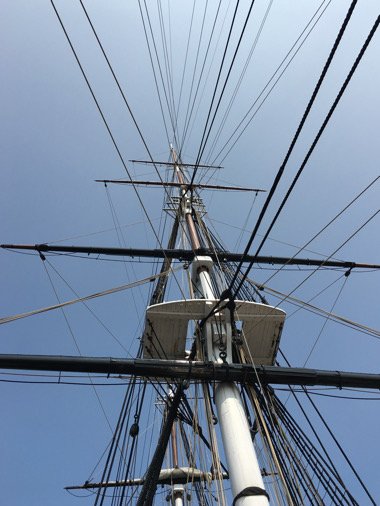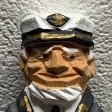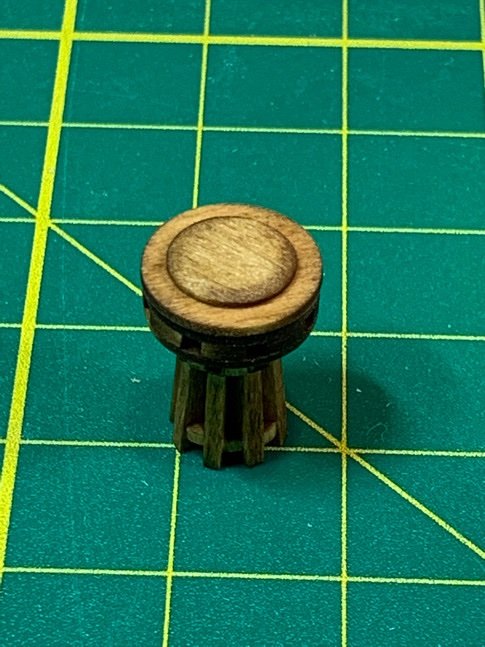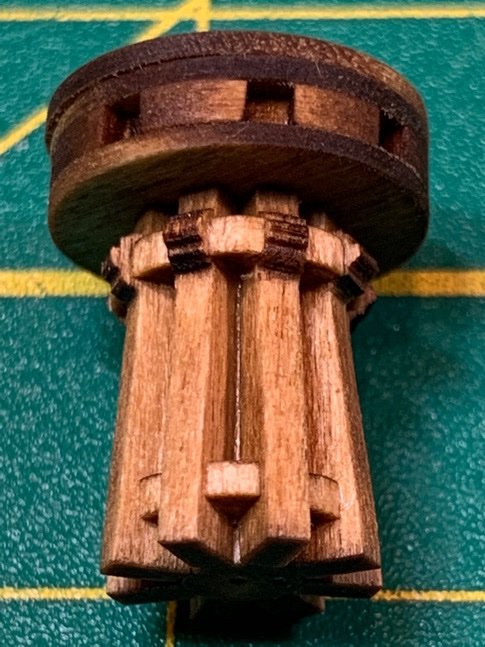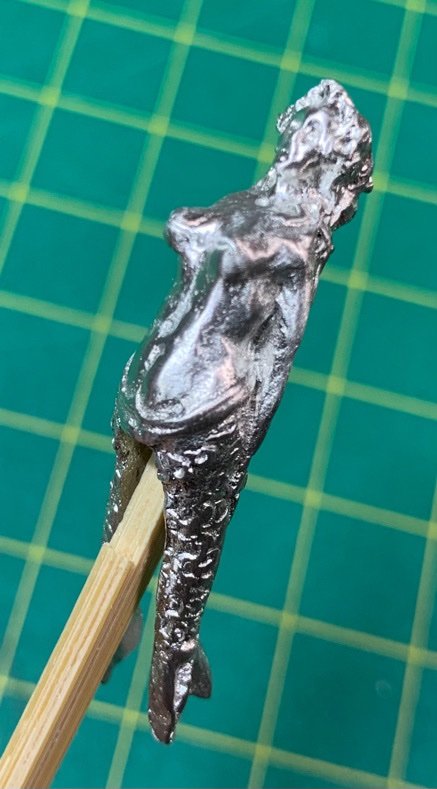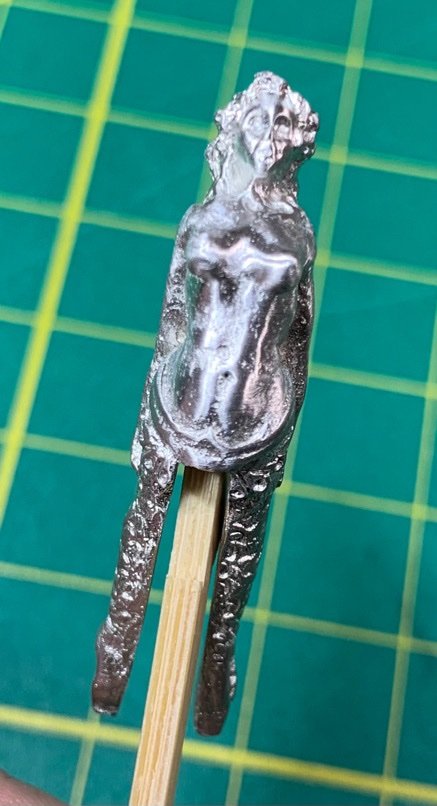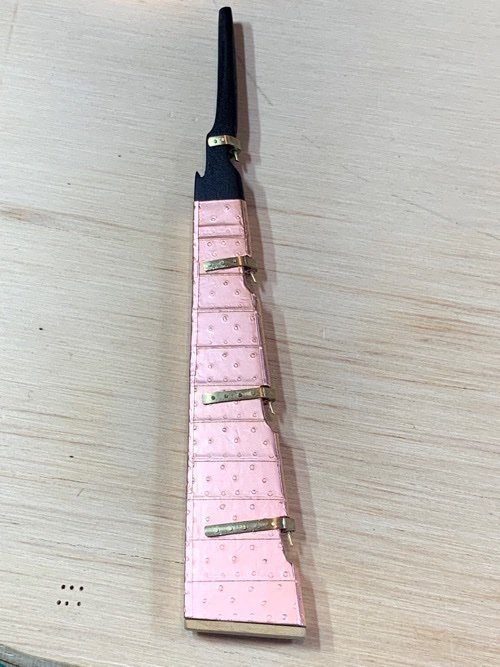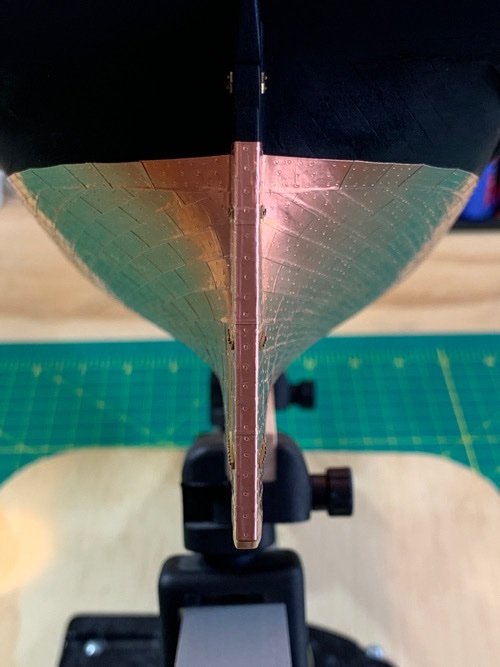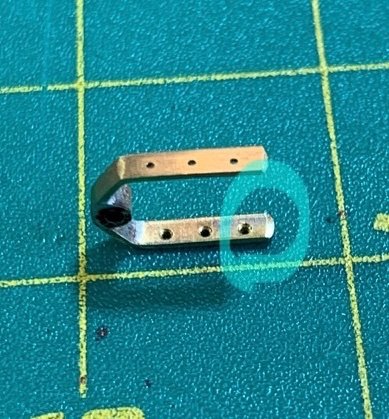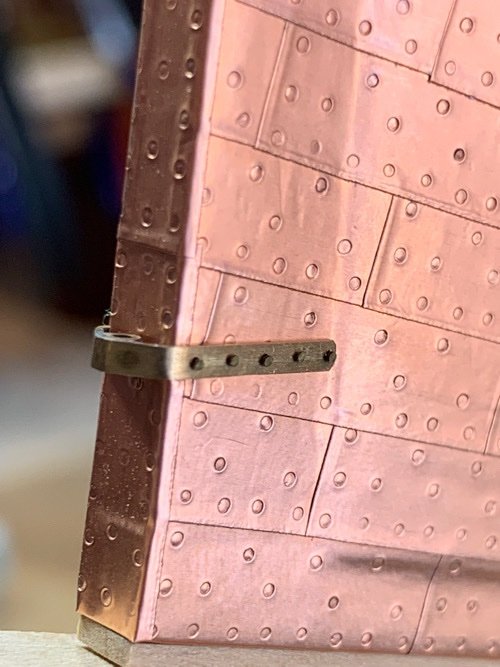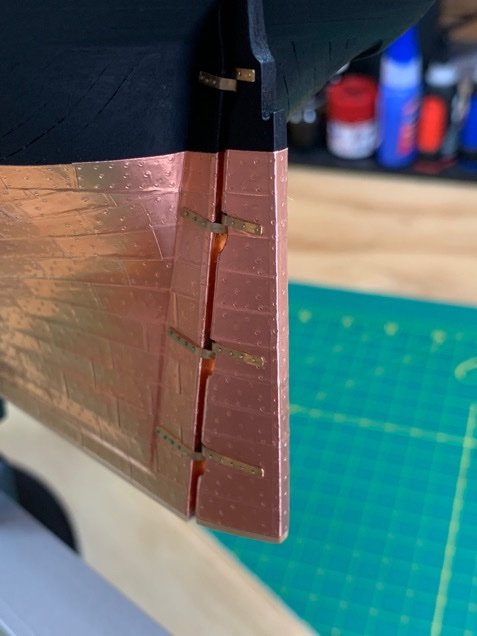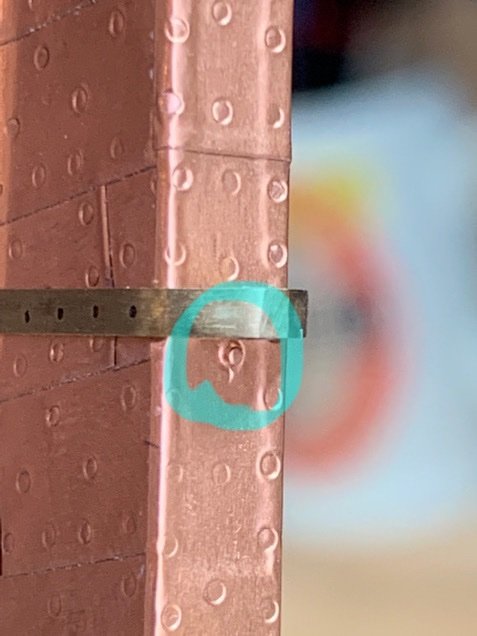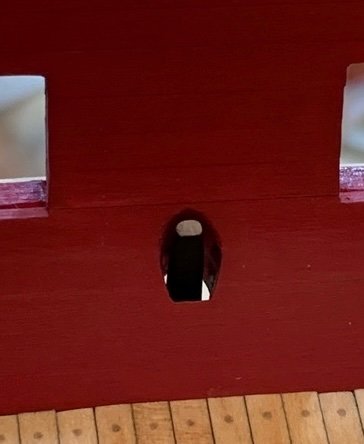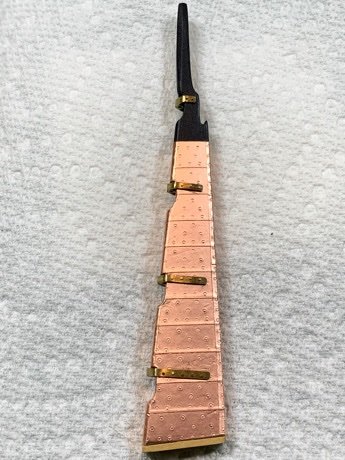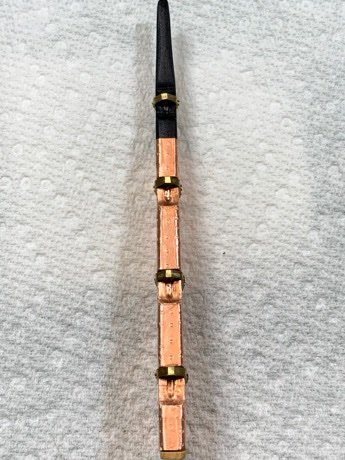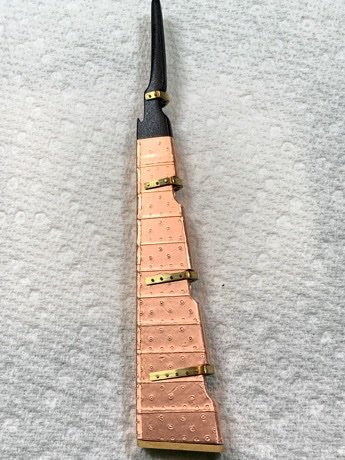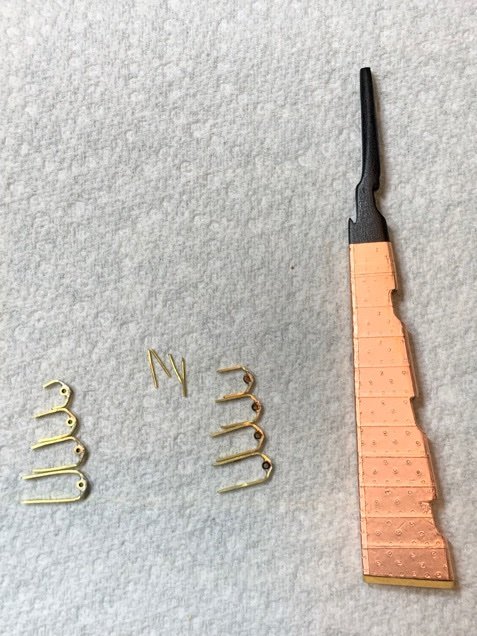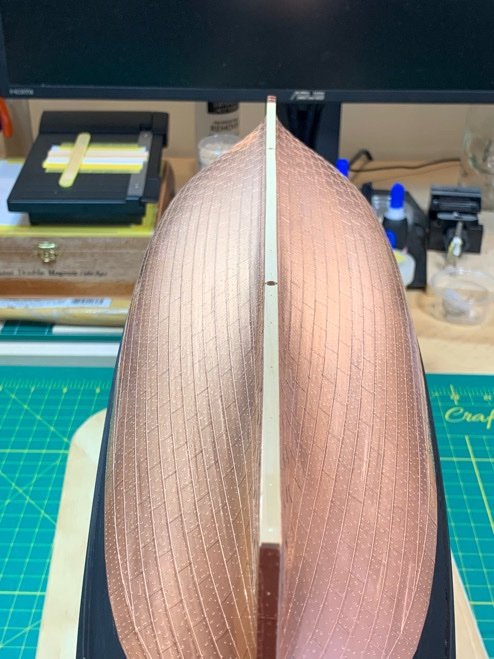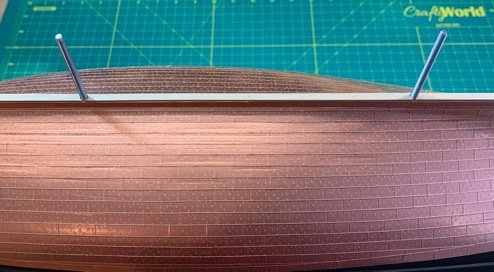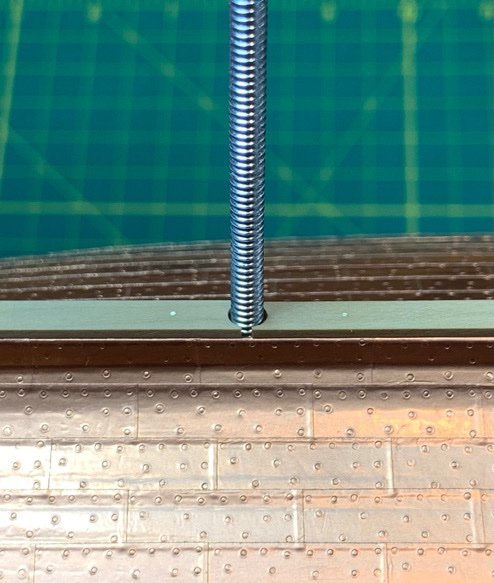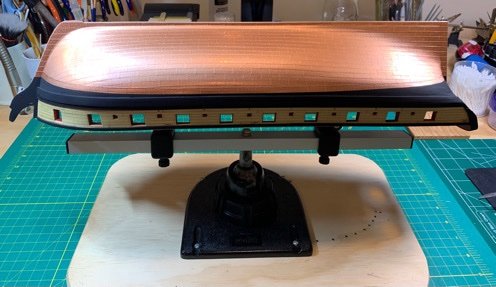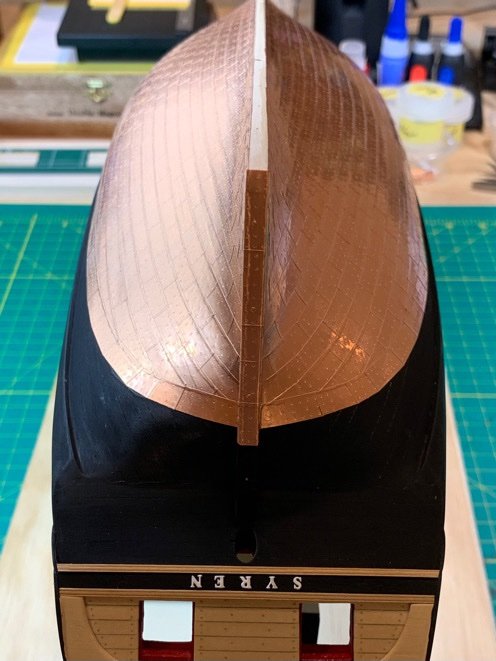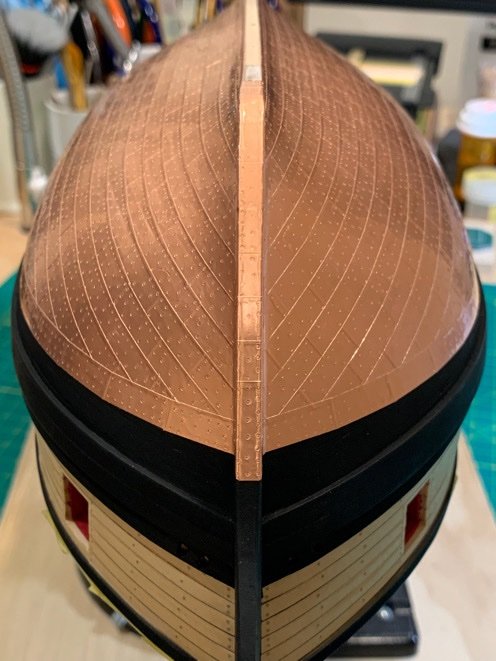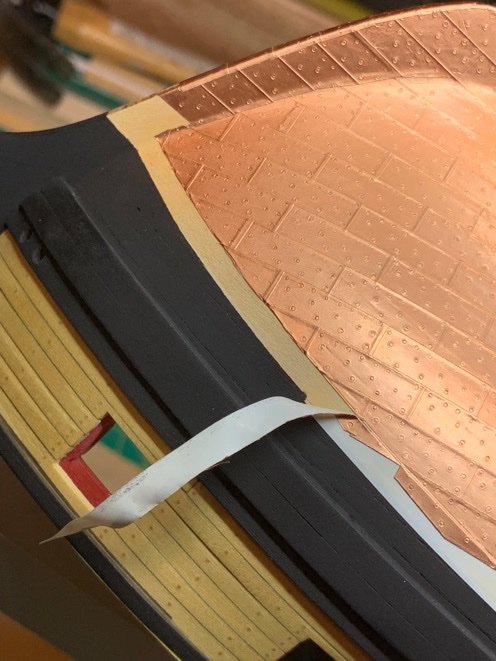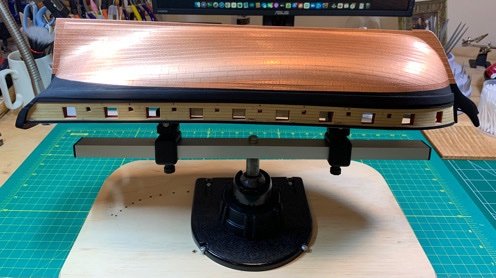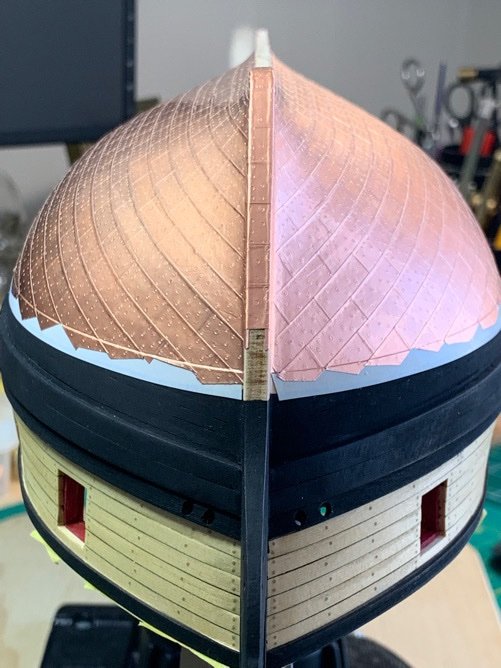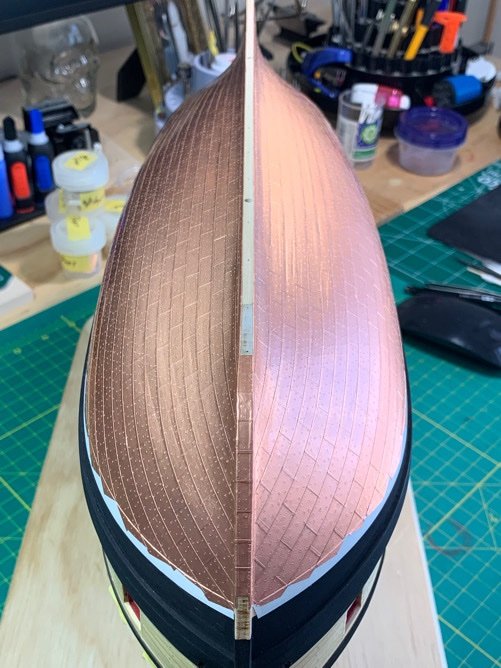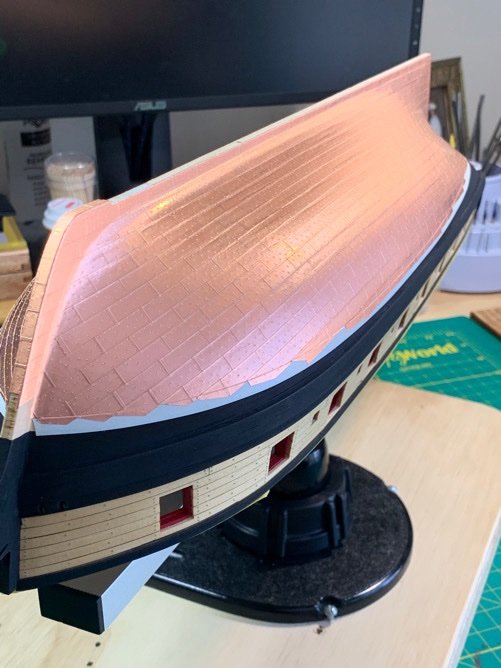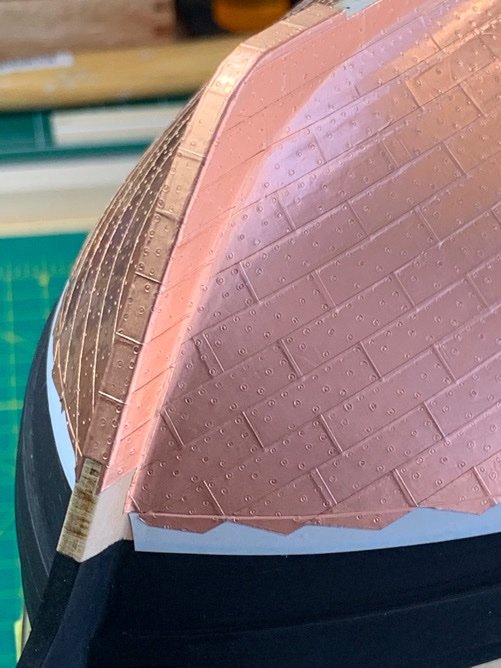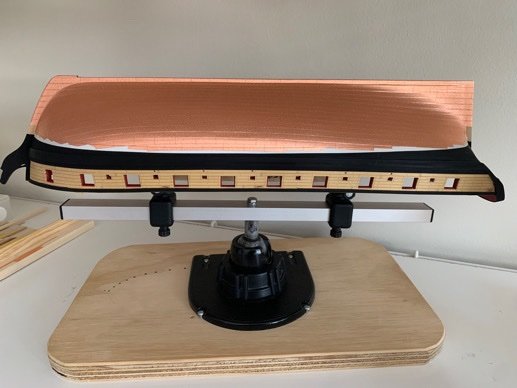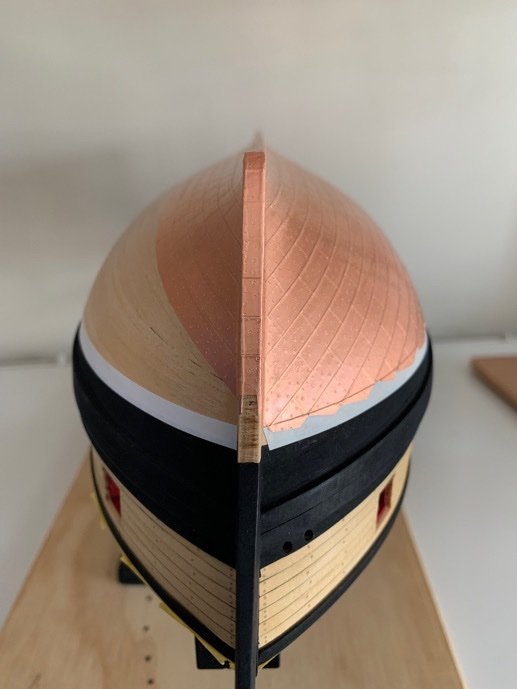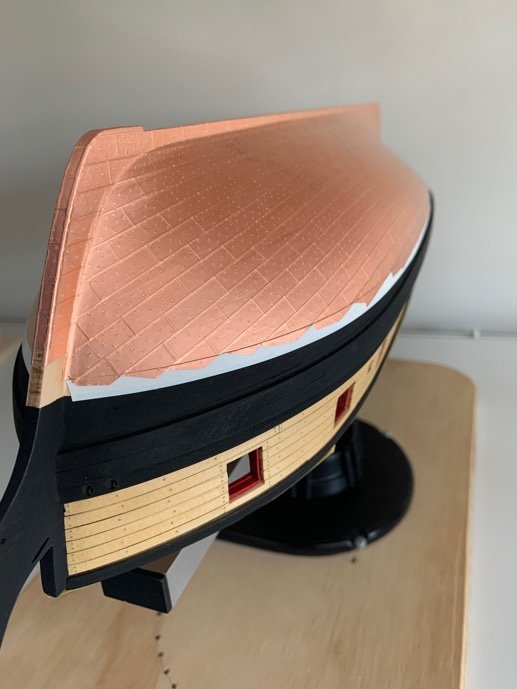-
Posts
1,256 -
Joined
-
Last visited
Content Type
Profiles
Forums
Gallery
Events
Everything posted by Overworked724
-
Well…took a side trip and made my capstan from the kit materials. I did a decent job of putting it together. The small triangular sections between each support were easy to make using a cross section of a wooden dowel, divided up like a pie. Made a mistake by staining with Golden Oak. The end result is that it looks like a turd. 😖 I might redo it…we shall see. Baby poop pics below. Definitely not happy with this result.
-
Just putzed a bit with the figurehead. Spent some time polishing it and getting rid of the burrs and roughness. It’s actually a pretty nicely shaped piece after all that…and I’ve double checked the fit and she slides onto the stem like a glove. I had briefly entertained the idea of trying to carve one, but I’m humble enough to admit I’d never come close to this clean of an image. So I’ll plan on painting her…just not sure the effect I’m shooting for…Wood? Copper? Multicolor? Decisions…
-
Nope. Call it a purposeful deviation. I think the P&G’s, polished and with an obvious brass metallic sheen contrasted nicely with the copper. I’m a chemist, and I’m not entirely certain that copper (a soft metal) was used in the P&G’s. Anodic/cathodic reactions would occur due to impurities in the metals available in that age regardless of whether they were the same metals or not. So I’m more inclined to believe they may have been bronze. The copper plating and brass P&G’s will oxidize and take on a different patina. Either way, they look good and the idea of blackening never touched my awareness! 😁
-
Ok. Got my gudgeons in…I’m not certain how others make/line up/install there P&G’s, but this part of the build is really intimidating to me. So I put a lot of preparation into how I would avoid bruising the copper. That was my biggest concern! So… here was my ridiculous approach to mounting these suckers. First, I put in the ‘pins’ into the pintles on the rudder: Next, I sanded in a slight bevel into the inner edge of each side of the gudgeons. Imagine snow skis. I wanted the gudgeons to slide across the sternpost without grabbing/scratching the copper foil. Then, I slid the gudgeon onto the stem post, using the tiny nail head I had placed into the post as an abutment to keep them from sliding. If you recall, when I test fit the P&G’s, I put in tiny nails (used in installing the P&G’s) as markers. They can’t really be seen and the copper easily wrapped around them. Then I lined up the gudgeons with the pintles and inserted the nails. The end result is pretty nice. 👍🏽 The copper plating was unscathed, and the rudder was cleanly aligned. The only minor discrepancy which my eye sees immediately is the fact that the bottom of the rudder ended up about 0.5mm higher then the false keel. However, I’m totally willing to accept that little ‘wart’ considering how nicely they turned out. Miller Time!!!!
-
Pintles in…they look OK. I think I could still go down a bit in thickness on them but they work. The small brass nails were actually quite easy to install…was lucky enough to invest in a ‘nail’ pliers which made inserting the bolts much easier. I test fit the pins into the pintles and will install them later after the gudgeons (🤞) have been installed. Baby pics: Moving on…
-
@Gregory Your P&G’s look marvelous! I did consider paper and had actually used them in the past on another build. This time, my goal was to actually make them as real functional P&G’s…bolts and all. Mounting the rudder using pins certainly makes the process more bullet proof. I’ll probably use this method in future builds. If anything, it will lower my blood pressure! 😁
-
How’s your sinus infection? I hear champagne toasts during the New Year cure most infections! 🍾
- 389 replies
-
- bluenose
- model shipways
-
(and 1 more)
Tagged with:
-
Beautiful work, Dave. I love the detail! Those strops are awesome. 👍🏽
- 389 replies
-
- bluenose
- model shipways
-
(and 1 more)
Tagged with:
-
Hey Cisco. Much appreciated! But I am still very much a newbie with only the completed Sultana in my model resume. I can say that most of my ideas are adopted (or modified) from other modeler’s posts. But posting the process helps me as well…to keep me motivated and to look back on what I did for future reference! Good and bad alike…it’s all beneficial to others. @niwotwill Will, 🙌 yes! I can honestly say I’ve got 3 miles of fingerprints on my hull. I tried using gloves but that’s simply a no go. I plan to do a gentle once over with isopropyl alcohol to try and remove the majority of the finger oil. Just tried on a swatch of plates I laid down a couple weeks ago and it doesn’t seem to impact the plate adherence. @Justin P. Hey Justin! I would say the Amati plates have some advantages…and you save some time in not having to make them. I honestly wasn’t too confident I could glue them on cleanly since they aren’t self adhering. You did a beautiful job with them. 👍🏽 Pluses and minuses to both options.
-
Coppering is complete! Cutting away the tape was a bit more difficult than I expected. Doing it this way made it easy to visualize the waterline, but it left a nasty edge to the existing copper plates. However, the copper tape was wider than the stripping tape, so installing the upper belt was a breeze. A few of the copper plate edges have popped up, but nothing major. So I’ll call this finished and move on to the rudder.
-
Thanks, @WalrusGuy! Your build continues to be one of my ‘go to’ blogs. I’m not done with this chore yet, but I am hopeful I can get the top belt on without too much damage. 🤞 Then it’s on to the rudder and the P&G’s…which are waiting in the wings. Got some momentum…looking forward to looking at the deck sometime soon! 🤣
-
The hull is fully coppered. I still need to cut away the tape and lay in the upper belt. This is why I left out the topmost trim pieces for stem and stern piece. I figured I might brutalize that area with my exacto and didn’t wish to repeat any coppering due to ‘slips’. In all, the coverage is symmetrical and consistent. I’m pretty happy it came out as clean as it did considering I eyeballed the entire thing! I was also pleasantly surprised at how easy it was to make subtle adjustments as you lay in the individual plates. I was nervous about the wrong things. Now I just need to gather the courage to cut that upper tape away. 😜 Taking a break today!!! That is one monotonous chore!!! Like others, I survived by binge watching a TV series during this process. The survival series, ‘Alone’ was my choice! 😁
-
Good question @CiscoH. Frankly, I have been prowling through every build log and Chuck's practicum. The photos don't really go into the curvy corner area at the stem. It was driving me to distraction trying to find how people got such great results at the 'seam' where the stem juts out from the hull. The Syren plating plan shows that the plates don't (and frankly can't) seamlessly 'bend' to lie in across that curvy angle. Lacking any specific directions, I went with simple - and winged it. The first two plating rows starting at the keel going up can be plated straight across from stern to the stem (overlapping). The subsequent rows I cut the plates for the stem and left a bit of an overhang into the 'corner' which the edge of the last plate on the hull would lay across. They are, frankly, cut to fit as closely as possible...and I had a lot of removals and redos in this area to ensure things looked 'consistent' even if it not historically accurate. Hope that helps. 3 books are: 'Tall Ships - History Comes to Life on the Great Lakes', Kaitlin Morrison 'The Sailing Frigate - A History is Ship Models', Robert Gardiner (GREAT BOOK...and excellent compliment to the build log for the Syren!) 'The Miniature Ships of August and Winnifred Crabtree', Vincent P. Scott
-
About 70% there. One side is done up to the upper belt. You can see where I still need to cut away the tape strip marking the waterline to put in the belt. A bit nervous about doing that…so will take the joy of at least completing both sides up to the belt before cutting away the tape and finalizing this job. Fingers crossed. Moving on…
About us
Modelshipworld - Advancing Ship Modeling through Research
SSL Secured
Your security is important for us so this Website is SSL-Secured
NRG Mailing Address
Nautical Research Guild
237 South Lincoln Street
Westmont IL, 60559-1917
Model Ship World ® and the MSW logo are Registered Trademarks, and belong to the Nautical Research Guild (United States Patent and Trademark Office: No. 6,929,264 & No. 6,929,274, registered Dec. 20, 2022)
Helpful Links
About the NRG
If you enjoy building ship models that are historically accurate as well as beautiful, then The Nautical Research Guild (NRG) is just right for you.
The Guild is a non-profit educational organization whose mission is to “Advance Ship Modeling Through Research”. We provide support to our members in their efforts to raise the quality of their model ships.
The Nautical Research Guild has published our world-renowned quarterly magazine, The Nautical Research Journal, since 1955. The pages of the Journal are full of articles by accomplished ship modelers who show you how they create those exquisite details on their models, and by maritime historians who show you the correct details to build. The Journal is available in both print and digital editions. Go to the NRG web site (www.thenrg.org) to download a complimentary digital copy of the Journal. The NRG also publishes plan sets, books and compilations of back issues of the Journal and the former Ships in Scale and Model Ship Builder magazines.

